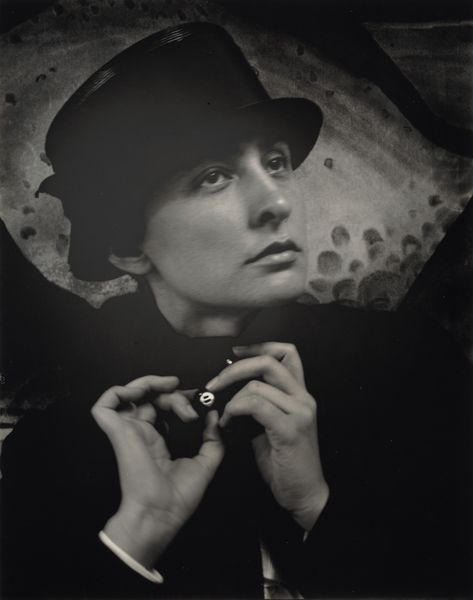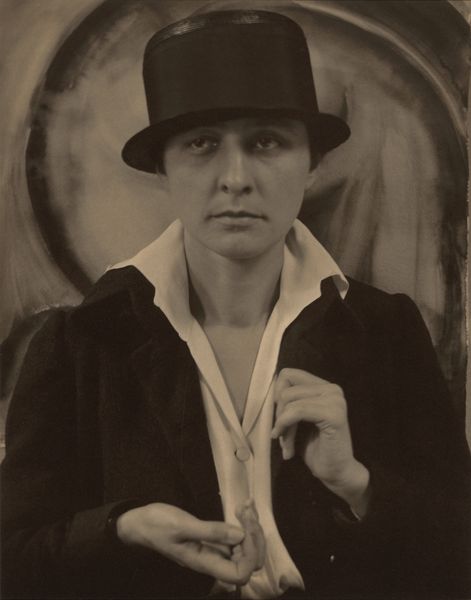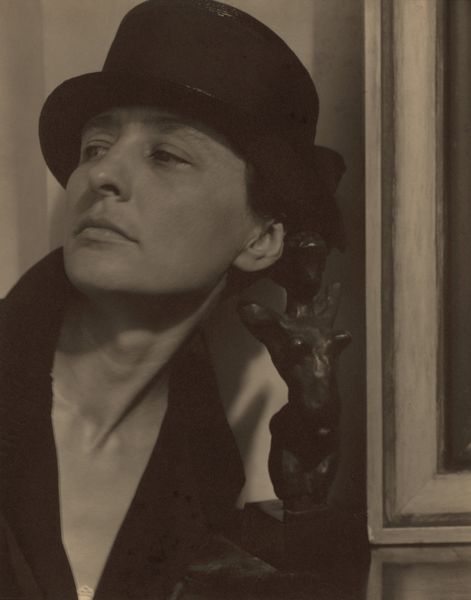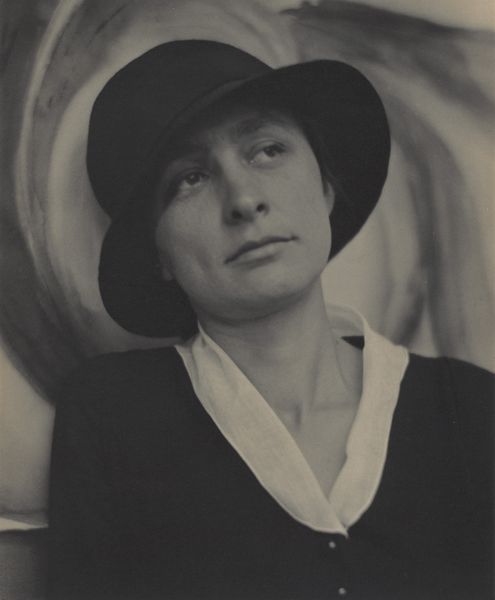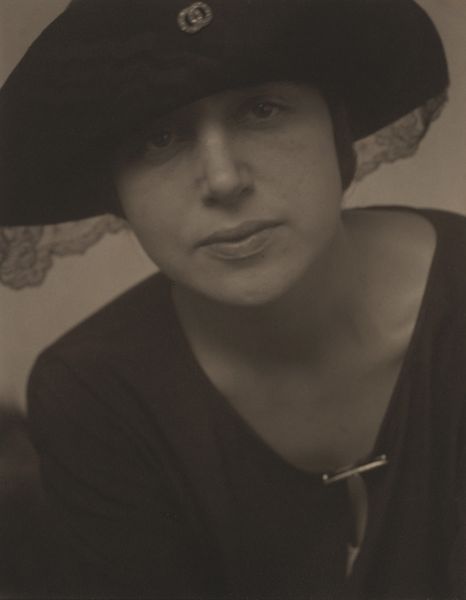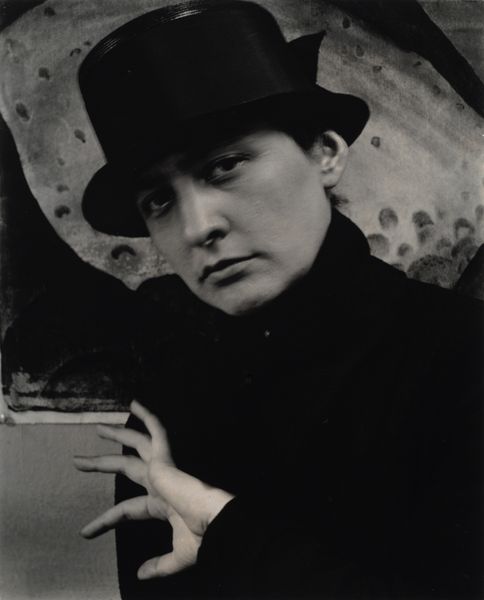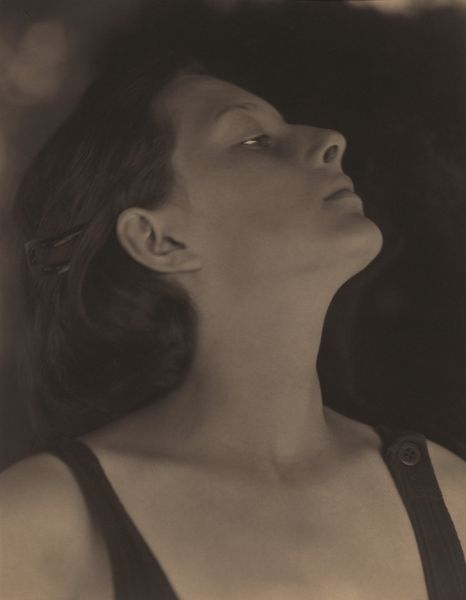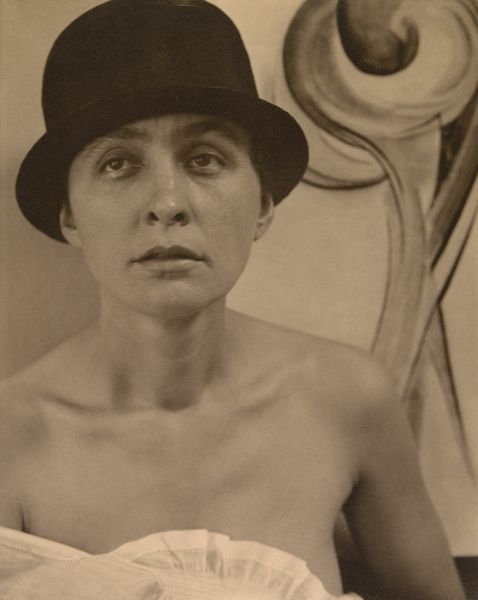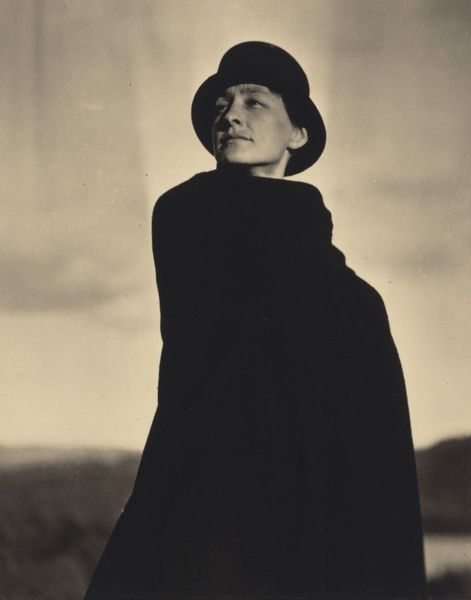
photography, gelatin-silver-print
#
portrait
#
self-portrait
#
black and white photography
#
pictorialism
#
portrait
#
photography
#
black and white
#
gelatin-silver-print
#
modernism
Dimensions: sheet (trimmed to image): 24.4 × 19.6 cm (9 5/8 × 7 11/16 in.) mount: 49.8 x 37.5 cm (19 5/8 x 14 3/4 in.)
Copyright: National Gallery of Art: CC0 1.0
Curator: Looking at this gelatin silver print, it's immediately striking. We see a portrait of Georgia O'Keeffe, potentially captured between 1918 and 1937. Editor: I’m struck by the ethereal quality, it's so soft and emotive. The swirling backdrop almost gives a sense of movement, in contrast to O'Keeffe’s static pose. It evokes a pensive, slightly melancholic mood. Curator: Melancholy certainly resonates. Stieglitz, of course, was O'Keeffe's husband. Their relationship was complex. Considering this photograph was created during a period of burgeoning artistic freedom for O'Keeffe, it’s hard not to read layers into this gaze. It certainly adheres to pictorialist aesthetics. Editor: Precisely, it feels very deliberate, not just a snapshot. Pictorialism was about elevating photography to high art, akin to painting. Do you think this framing portrays a power dynamic? Stieglitz arguably brought her into the public eye, in doing so creating a certain persona, for which the politics remain debatable. Curator: That's a vital point. Stieglitz very intentionally molded her image. I think the positioning, the slight upward tilt, the way she holds her hand - all speak to both strength and vulnerability. It’s an intriguing and perhaps even conflicting presentation of O'Keeffe's identity. Editor: The hat is particularly interesting. It hides her hair, slightly masculine, yet frames her face drawing our gaze directly. It speaks of a sort of ambiguous elegance and defiance, perhaps a symbol of her breaking free from conventional expectations. Curator: Absolutely, and it resonates with the gender politics that marked O’Keeffe's career. Being a successful woman artist during that time was a tightrope walk and here, there seems to be a knowing dance on that very rope. Editor: Considering how Stieglitz actively managed O’Keefe's early exposure in the art world, this piece feels incredibly vital when contextualizing their overall dynamic. It presents a timeless discussion about agency, particularly for female artists then and even now. Curator: Definitely. A symbol charged with cultural weight! It's hard to dismiss its impact when looking back at art history, so shaped by those very figures. Editor: In this case, it holds remarkable beauty while demanding a dialogue on perception and power.
Comments
No comments
Be the first to comment and join the conversation on the ultimate creative platform.

